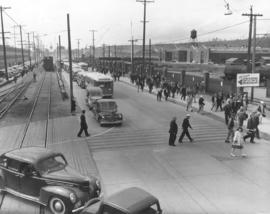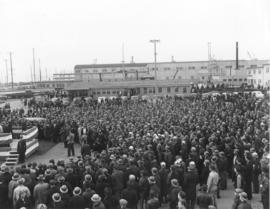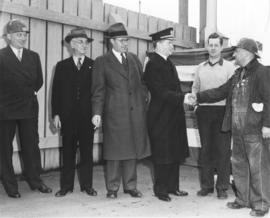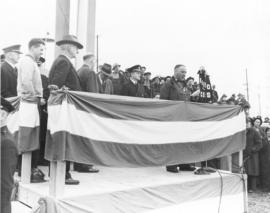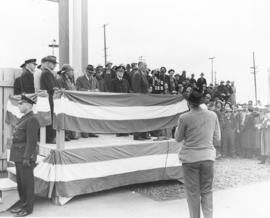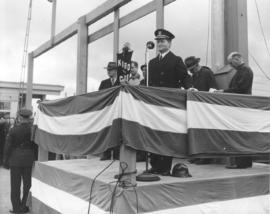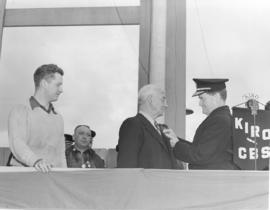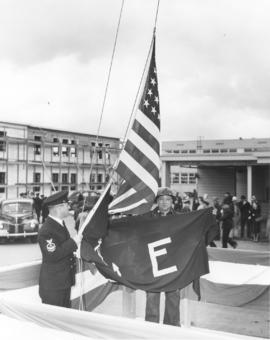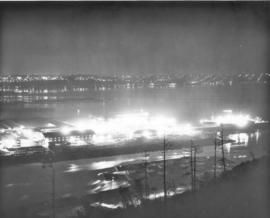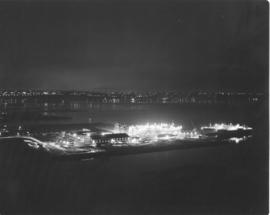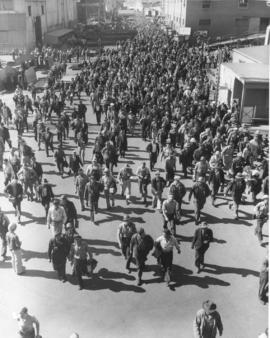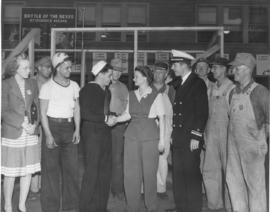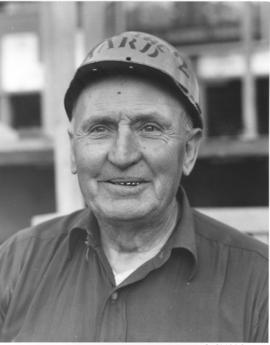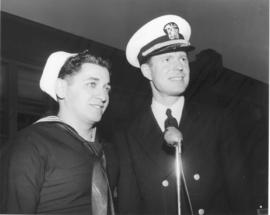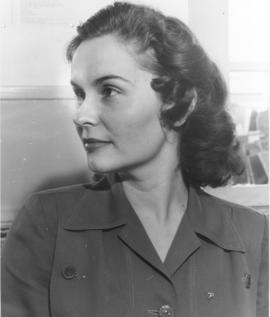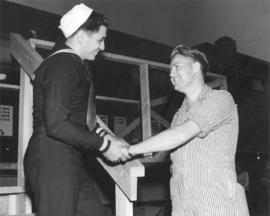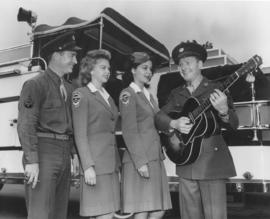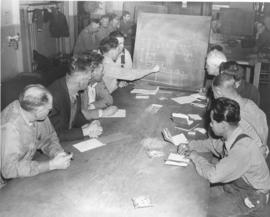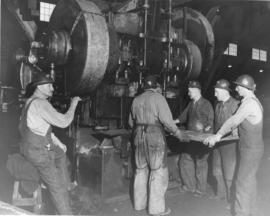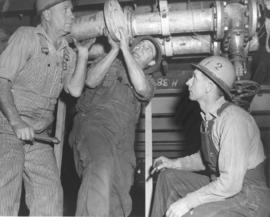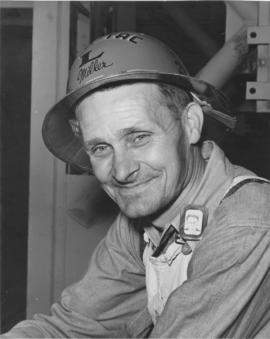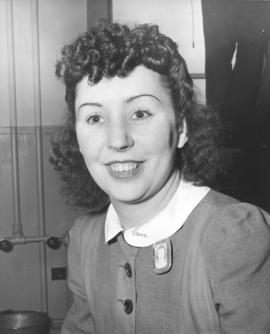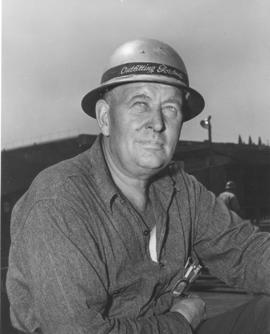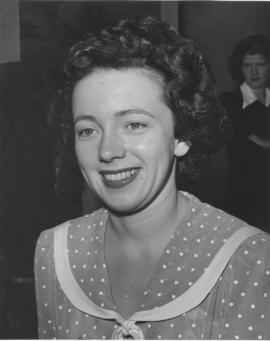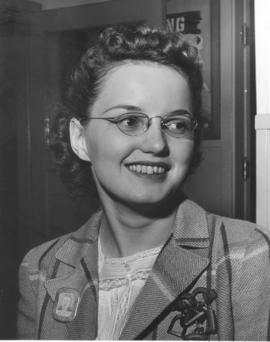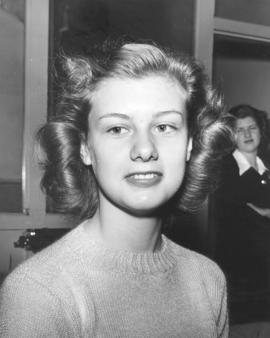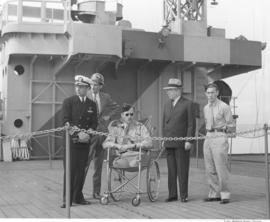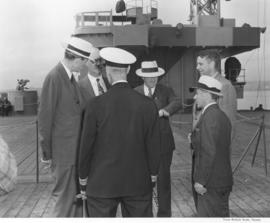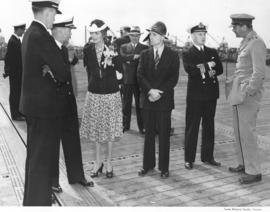- Item
- 1944-02
Part of Richards Studio Photographs
By February of 1944, the traffic problems on the Tideflats, resulting from the increased employment at the Seattle-Tacoma shipyard, had subsided so much that after a nation wide survey it was found to have the "best handled traffic of any plant" in the US. This photo, looking north on Alexander Ave., was taken of the outgoing traffic, involving thousands of employees, just after the change of shift. Over 300 Victory busses, privately owned vehicles of all shapes and sizes, carried 28 per cent of all traffic to outlying areas, such as Enumclaw, Olympia and Aberdeen. Municipal busses carried 44 per cent and private cars, with car pools, carried 28 per cent. It took about 18 minutes to clear out the congestion after shift change. (Sea-Tac Keel, Vol. III, No. 4, pg.4-5; February 26, 1944 issue)
Seattle-Tacoma Shipbuilding Corp. (Tacoma); World War, 1939-1945--War work--Tacoma; Automobiles--1940-1950; Traffic congestion--Tacoma--1940-1950; Mass transit--Tacoma--1940-1950; Buses--Tacoma--1940-1950;
